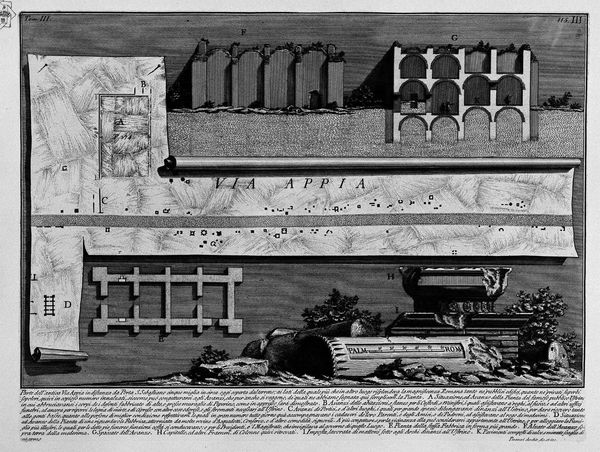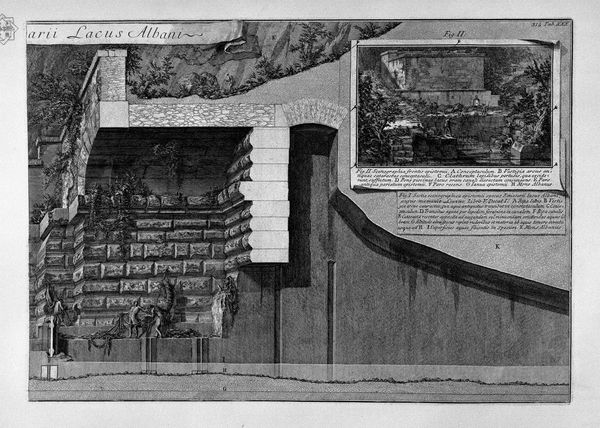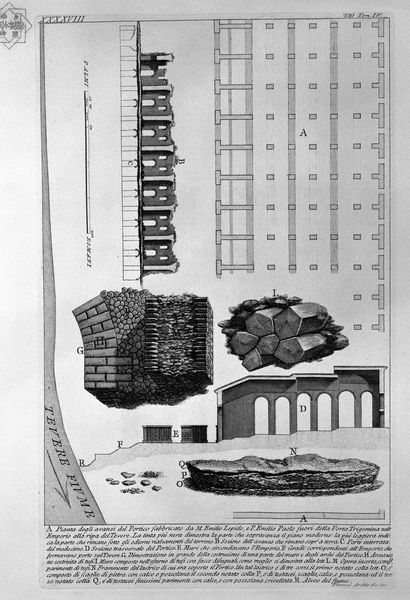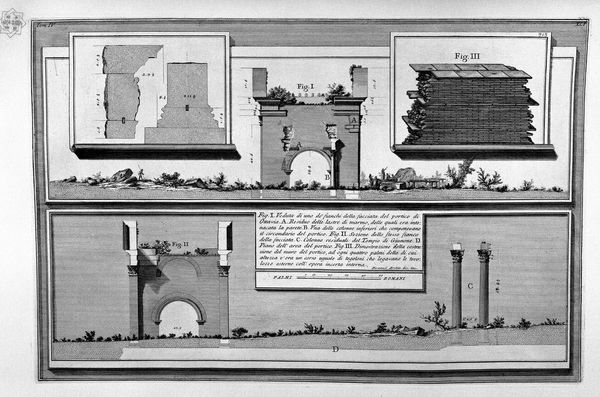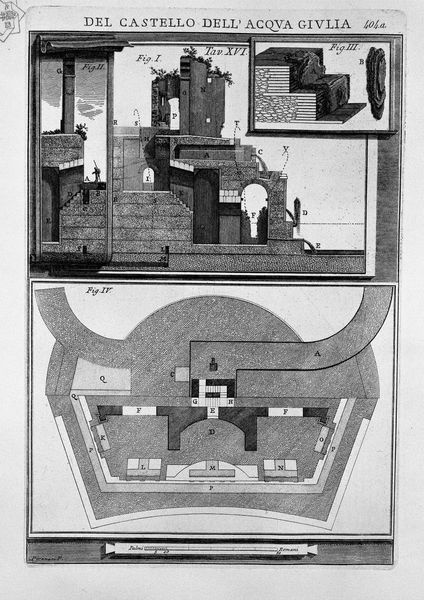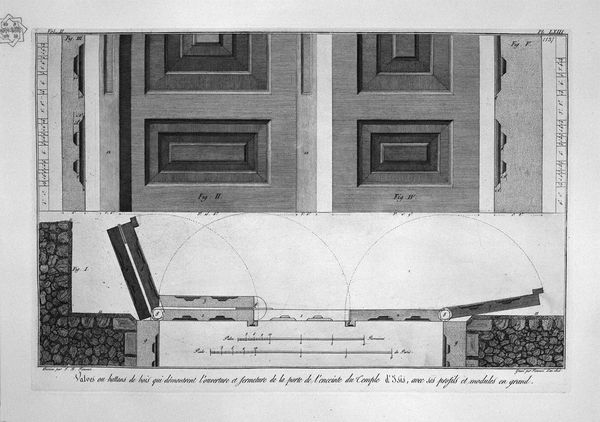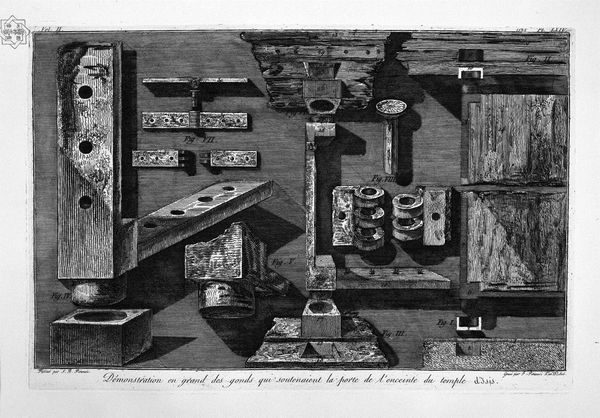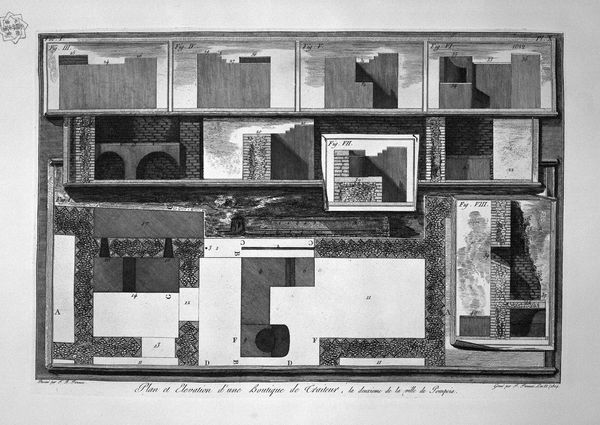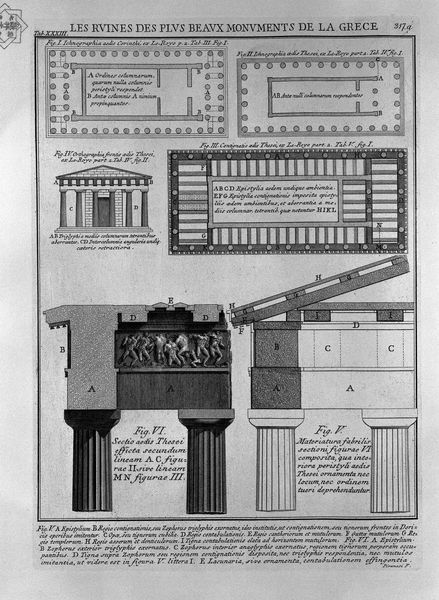
The Roman antiquities, t. 2, Plate LXII. Cutaway view of the Mausoleum of Augustus.
0:00
0:00
drawing, print, engraving, architecture
#
drawing
# print
#
romanesque
#
ancient-mediterranean
#
arch
#
cityscape
#
history-painting
#
engraving
#
architecture
#
monochrome
Copyright: Public domain
Curator: This print is by Giovanni Battista Piranesi, part of his series on Roman antiquities. Specifically, it is a cutaway view of the Mausoleum of Augustus. Editor: It feels like peering into the ghost of a building. All those meticulously drawn stones, the sense of a grand structure violated and revealed. It’s a beautiful melancholy. Curator: Piranesi’s work is so fascinating because it bridges the archaeological impulse to document and the artistic drive to reimagine. He's not just showing us what’s there; he's also commenting on Rome’s layered history. Notice how the cutaway almost theatricalizes the mausoleum. Editor: Absolutely. It's as if the earth itself is being pulled back like a curtain, and we're getting a glimpse behind the scenes of time. The scale of those tumbled blocks compared to the detailed structure suggests something immense, brought down. Curator: Right. Remember, Piranesi worked during a time of renewed interest in classical antiquity. The excavations and discoveries fueled nationalist sentiment and ideas about cultural continuity. His prints were widely disseminated and became crucial documents. They influenced architectural design, preservation efforts and, of course, understandings of Roman identity. Editor: And he wasn't afraid to romanticize, right? There’s a drama to it all, the light, the way the ruins are positioned. It’s more than a diagram, it’s a statement. A poignant reflection on impermanence, I think. How even the mightiest empires fade. It's more felt than fact. Curator: Indeed, Piranesi's Rome exists somewhere between fact and artistic invention. The meticulous details speak to the Enlightenment's desire for scientific accuracy. But the dramatic composition reminds us of the power of ruins to evoke awe and a sense of historical loss. He made sure that his art could evoke conversations that resonate through history. Editor: It makes me wonder if even in decay, art carries on telling tales that even the emperors would never envision. I look at it and my imagination kicks off, dreaming. Curator: Ultimately, it speaks to the enduring power of ruins to ignite our imagination and make us reflect on the cyclical nature of history and the evolution of its symbolism through the ages.
Comments
No comments
Be the first to comment and join the conversation on the ultimate creative platform.

